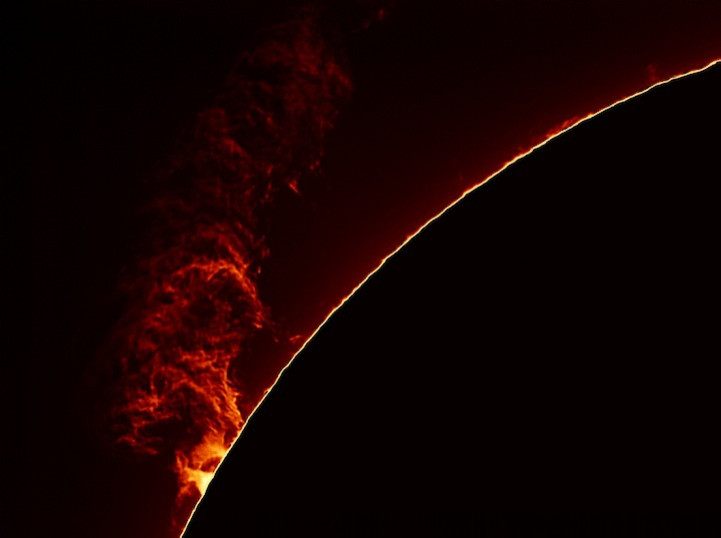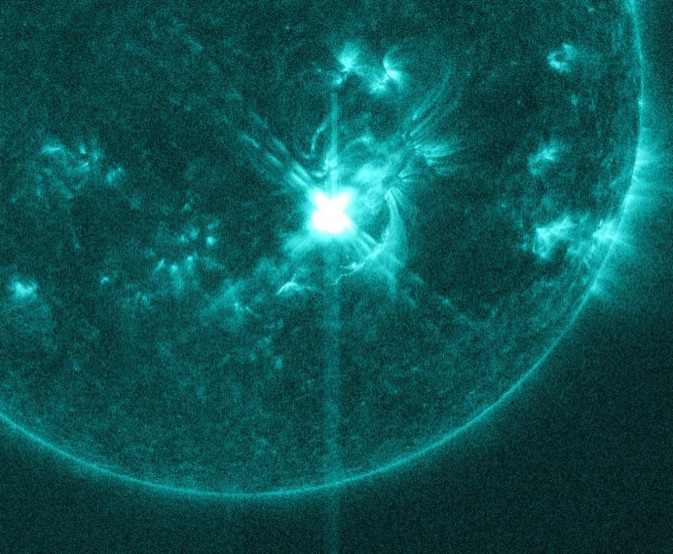Solar Flares In Stunning Images: Photographer Captures Sun’s Immense Power [SLIDESHOW]

A solar flare is considered to be one of the most magnificent extraterrestrial phenomena that occur in our solar system, and a photographer, Pepe Manteca, has managed to capture its splendor.
In his portfolio, Manteca has shared many images ranging from solar flares to that of the Comet ISON, and in this particular selection of images, parts of the burning sun have been displayed against a black sky full of stars, highlighting its immense power.
Solar flares are powerful bursts of radiation observed over the sun’s surface. The flares eject clouds of electrons, ions, and atoms through the corona of the sun into space that typically reach Earth a day or two after the event.
Although harmful radiation from a solar flare cannot penetrate the Earth's atmosphere to physically affect humans on the ground, when intense enough, they can disrupt communications on the planet by causing a disturbance in the atmosphere that is home to several human-built satellites.
NASA recently said that the sun emitted a significant solar flare, which peaked at 12:14 a.m. EST on Sunday, Nov. 10. The flare was classified as an X1.1 class flare. "X-class" represents the most intense flares, while the number provides more information about its strength. For instance, an X2 is twice as intense as an X1, and an X3 is three times as intense.

According to NASA, increased numbers of flares are quite common at the moment as the sun's normal 11-year activity cycle is ramping up toward solar maximum conditions.
“The first X-class flare of the current solar cycle occurred on February 15, 2011, and the largest X-class flare in this cycle was an X6.9 on August 9, 2011. This is the seventh significant flare since Oct. 23, 2013, with the largest being an X3.3 on Nov. 5, 2013,” NASA said.
© Copyright IBTimes 2024. All rights reserved.






















